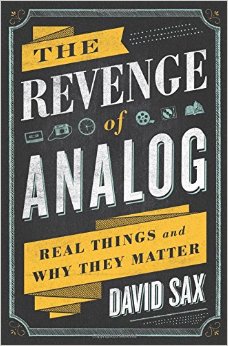
If Silicon Valley had its way, all humans would have abandoned analog products by now. We’d be consuming music from the cloud (instead of on tapes or discs), reading stories online (instead of in books) and sketching notes and designs on battery-powered devices (instead of in notepads). And indeed, many of us do.
And yet, apparently, we’ve also started an analog revolution. Sales of objects like vinyl records, paper notebooks and even board games have consistently grown over the past decade, as has their cultural relevance. Meanwhile, big brands in e-commerce, including Warby Parker and Amazon, are rushing to open the very brick-and-mortar stores they promised to supplant.
What’s driving this switch? Many assume it’s nostalgia, led by the wistful romance of aging Luddites. But in fact, many of analog’s newest fans are millennials drawn to its raw utility—the designer who uses a Moleskine notebook, for example, to sketch out a website’s early look.
Opting for less-modern technology might seem to make no sense. But remember that humans aren’t machines, tasked with delivering the most logical solution at all times. We are complex creatures, driven by emotions beyond our comprehension. And at its core, the human experience remains a deeply, truly analog one, no matter how many virtual platforms we embrace.
More Must-Reads from TIME
- How the Economy is Doing in the Swing States
- Democrats Believe This Might Be An Abortion Election
- Our Guide to Voting in the 2024 Election
- Mel Robbins Will Make You Do It
- Why Vinegar Is So Good for You
- You Don’t Have to Dread the End of Daylight Saving
- The 20 Best Halloween TV Episodes of All Time
- Meet TIME's Newest Class of Next Generation Leaders
Contact us at letters@time.com